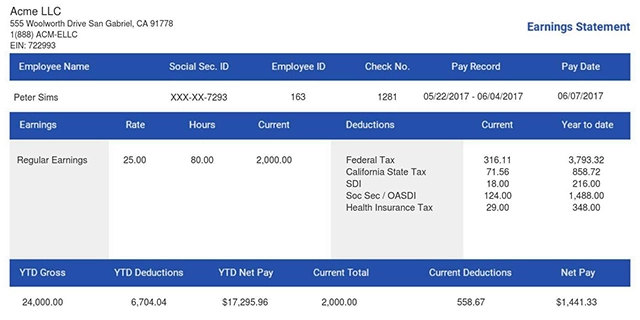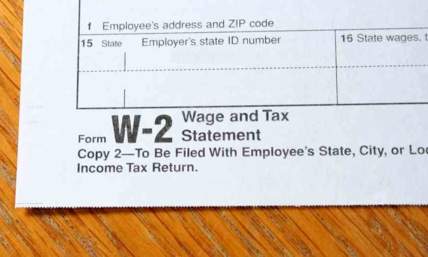What Exempt vs Non Exempt Classification Actually Means
A clear difference between exempt vs non-exempt employees is said to be important. So, both the employees and employers need to know how it works.
Such classifications have implications no less significant than determining how employees are paid. This applies even up to the federal legal privileges they enjoy. The words may sound like legal mumbo jumbo, but there are big consequences. It affects wages, overtime, and expectations in the workplace.
In this examination of the topic, we will differentiate between exempt vs non exempt. You’ll learn about the fine print and what it means in real life.
What Is Exempt vs Non Exempt?
Beneath it all, what separates exempt from non-exempt comes down to the law. It is a question of “exemptness” from certain parts of the Fair Labor Standards Act. It is mainly about the laws regarding overtime and minimum wage.
An exempt employee is one to whom the FLSA does not give these protections. These people usually get paid a salary instead of an hourly wage. So, there’s no overtime pay, and nothing they do can make them entitled to it. It doesn’t matter how many hours they work in a week.
The basis of this classification is that exempt job holders have more responsibility. With that, there’s more autonomy and remuneration to compensate for the absence of overtime entitlements.
On the other hand, a non-exempt employee comes under the FLSA. The act has some rules in place to protect them. These workers must be paid not less than the federal minimum wage for working all the hours. They also get overtime, which is calculated as one and a half times the normal pay they get.
The maximum number of hours in a normal workweek is 40. So, if they work more than that, it will be counted as overtime. Non-exempt jobs usually involve more operational or technical tasks. They do not involve as much independent judgment as a comparably positioned exempt job.
This isn’t just a question of employer preference. Federal law dictates criteria, which are the basis for the correct classification of employees as exempt.
Differences Between Exempt vs Non-Exempt Employees
The differences between exempt vs non-exempt employees are more than overtime. It includes:
Pay
Exempt employees, in most cases, have a fixed amount they get paid at the end of the month. It won’t change even if their working hours change. Non-exempt employees are normally paid by the hour.
Perhaps the greatest difference is still on the issue of overtime pay that non-exempt employees get. They get paid extra if they pick up any extra hours above the normal 40 in a workweek. Employees who are exempt cannot be paid overtime. It doesn’t matter how many extra hours they pick up.
Schedule
Flexible schedules are a benefit that comes to those employees who are exempt. If they are expected to get their work done, they may also have some more flexibility. Maybe spend longer lunches, or attend to their personal business during normal work hours. Non-exempt employees usually follow tightly formulated schedules. Many also have formal time tracking regulations.
Duties
The exempt positions typically carry a heavier managerial, professional, or administrative duty. Most times, their work needs some sort of specialized knowledge. They’re also allowed to use their discretion and judgment in their work.
Non-exempt jobs tend to have more routine, operational, or technical work to do. Their work follows established procedure. Further, employers must keep records of the working hours of non-exempt employees. This ensures they pay them for overtime correctly. However, many organizations still record the time of exempt employees for project purposes.
Criteria for Determining Exempt Status
In order to classify an employee as exempt, employers must use three company tests under the FLSA:
-
Salary Basis Test
The employee must be paid a proper amount, which is stable, in each pay period. This pay cannot move in line with any changes in the work they do.
-
Salary Level Test
Since January 2025, the employee needs to make at least $1,128 weekly. This translates to about $58,656 annually. The limit may be revised as time goes on.
-
Job Duties Test
The main duties of the employee need to lead to them being under some other exemptions. These exemptions include those related to executive, administrative, professional, computer, or outside sales. Job titles alone can not be enough to show exempt status.
For example, let's say an employee frequently oversees more than two full-time employees. That's when they can be eligible for the executive exemption. At the very least, they have to oversee a portion of the company. Additionally, they must be able to employ, fire, and make other personnel decisions.
Tax Implications for Different Classifications
The tax obligations that the exempt vs non exempt employees have aren’t all that different. Federal and state income taxes are paid by all employees according to what they earn. Their withholdings are done in line with the W-4 forms. They also pay for social security and Medicare (FICA) taxes, with employers matching their contributions.
Additional wages for non-exempt employees for overtime are taxed the same as with regular pay. The classification does not establish unique tax statuses. However, it does have an impact on the overall compensation and, directly, on the tax liability.
Employers should have correct payroll records for both exempt and non-exempt employees. So, they know which employees must be exempt and which are non-exempt. They should ensure proper filing of taxes as well as wage and hour compliance.
Consequences of Misclassification
Misclassifying employees is perhaps the most standard and most expensive payroll mistake. Employers found non-compliant are taken very seriously by the Department of Labor. And they may suffer consequences. They may have to pay back wages for unpaid overtime or face civil penalties. Liquidated damages in an amount equal to unpaid wages are also a possibility.
Frequent misclassification mistakes include mistaking all salaried employees’ eligibility for automatic empowerment. Another is classification on titles only and not duties. Some employers also fail to reclassify employees when their role changes.
It is the employers’ responsibility in the long run to defend an employee’s exempt status. In order to reduce risk, employers should ensure that job descriptions are scrutinized well. They should also check duties and remuneration structures frequently. This helps them guarantee proper classification.
Reclassifying Employees
Business needs and regulations are changing a lot. So, employers may sometimes need to change employees’ statuses. Careful planning and communication are needed to get this process off the ground. In reclassification from exempt to non-exempt, the employer should:
-
Analyze its financial implications with potential overtime costs.
-
Put in place time-tracking systems if there was no prior need for them.
-
Use transparent communication and tell the reasons why the change is made. They should also explain the impact it will have on employees’ pay and work schedules.
-
Teach and train new non-exempt workers in the procedures of time tracking policy and overtime.
-
Consider upping base pay rates to make up for overtime so that average remuneration doesn’t change by a large margin.
When reclassifying from non-exempt to exempt positions, employers must take the necessary steps. They need to make sure that the employees meet all three tests.They should also train employees to transition from hourly to salaried compensation. They also need to explain if there is anything about the benefits or work expectations that have changed.
Either way, transparency is important. Staff members tend to think of reclassification as demotion. Some may even see it as an act of blighting their status. In reality, all it entails is a requirement of the law. Proper communication as to the reasons for change can remove the undesirable reactions.
Final Comments
Properly classifying employees as exempt vs non exempt is not simply a technicality. It is an essential requisite of employee law. Not adhering to it comes with some serious ramifications for the employers and employees. Employees need to know this. So, their organizations can ensure fair compensation practices with reduced legal risk.
Ensure accurate exempt vs non exempt employee classification with The Paystubs. Our platform helps businesses generate professional pay stubs. This makes payroll management seamless and compliant. Stay on top of wage regulations. Visit today and streamline your payroll process!














